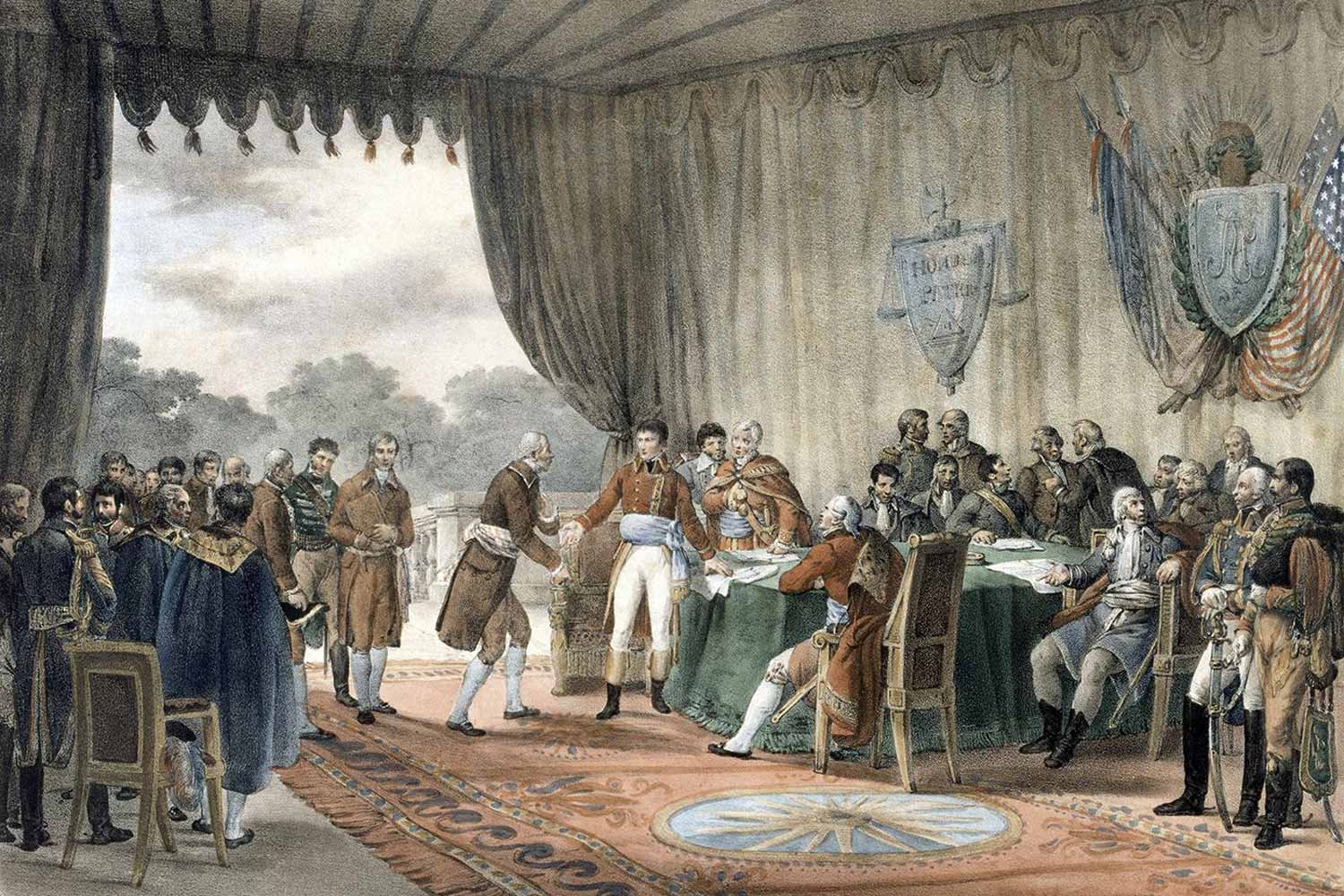Settling the Ohio Frontier
The Northwest Ordinance of 1787 created the Northwest Territory and a template for how the vast area, also known as the Ohio Country, was to be settled by the United States. But determining how the land was to be developed was the easy part. The more challenging aspect for the federal government was how to make the territory safe for the new settlers given the many Indian tribes who claimed this area as their own and had no desire to move.
The clash between these two disparate cultures resulted in the Northwest Indian War, the first war ever fought by the new Constitutional government. The land over which they fought comprised 300,000 square miles and had been largely uninhabited until the 1730s and 1740s when Shawnee, Delaware, and Wyandots began moving there as they lost their lands to the powerful Iroquois Confederation according to the “right of conquest” reality by which all Indian tribes lived.
But with the American Revolution over and this fertile land available for settlement, many Americans began moving west. Among them were numerous Continental Army veterans who had received land grants ranging from 100 to 1,100 acres from Congress as a reward for their past service. One of the leading proponents of this movement was Rufus Putnam, a Massachusetts millwright and surveyor who had risen to the rank of Brigadier General in the Continental Army during the American Revolution.
Putnam, along with others such as Manasseh Cutler, a Congregational clergyman, formed the Ohio Company of Associates in 1786 and convinced Congress to sell them 1,500,000 acres for $1,000,000. Two years later, Putnam founded the first town in the Northwest Territory, the small settlement of Marietta at the confluence of the Muskingum and Ohio Rivers, and other settlers and settlements soon followed in its wake.
Land speculation was rampant in the territory as investors bought up as much land as they could afford, which provided badly needed capital to the cash strapped federal government. Offered by these speculators to the public at relatively low prices, the magnet of good, affordable land attracted many settlers from east of the Appalachians. However, the rapid influx of pioneers into this previously unoccupied region almost immediately led to issues with Indian tribes, and raids and counterraids occurred with alarming frequency along the Ohio River.
Determined that the new republic move forward, President George Washington took steps to secure the Northwest Territory from British encroachment and protect the new settlers from Indian raids. But it was his wish to do so by peaceably purchasing land from the tribes rather than committing to an expensive war. As Washington stated, “there is nothing to be obtained by an Indian War but the soil, and this can be had by purchase at less expense.”
"Josiah Harmar." Wikimedia.
In January 1789, Territorial Governor Arthur St. Clair coerced several chiefs to sign the Treaty of Fort Harmar which essentially ceded all of Ohio to the United States. The Shawnee, encouraged by British emissaries and promised British support, refused to sign the treaty or acknowledge its legitimacy and threated to kill all whites north of the Ohio River. Left with no recourse except force, Washington assigned General Josiah Harmar to the command of the First American Regiment and tasked him with launching a punitive expedition into the heart of the Shawnee and Miami tribal homeland.
Harmar was a former Continental Army officer who had participated in the 1775-76 invasion of Quebec, served as adjutant for General Nathanael Greene in Greene’s southern campaign, and was much respected by George Washington. Unfortunately, Harmar proved to be a poor choice for this command. In late September 1790, he led about 320 poorly trained regulars and 1,100 militiamen from Pennsylvania and Kentucky, described by one officer as not the “kind which is calculated for Indian Expeditions.”
As the American army moved north, the Indians abandoned their villages. Upon reaching the Miami Indian town of Kekionga (modern day Fort Wayne, Indiana) on October 17, Harmar’s men burned the town and all its food caches. They did the same to four neighboring towns over the course of three days, destroying twenty thousand bushels of corn, before starting their return march to Fort Washington.
In a series of battles between October 19-22, in dense, heavy woodlands, Harmar’s regiment was ambushed several times and soundly defeated by the Northwestern Confederacy, a coalition of Indian tribes primarily led by Miami chief Little Turtle and Blue Jacket of the Shawnee. Despite suffering over 200 casualties and retiring to Fort Washington in complete disarray, the politically connected Harmar was absolved of wrongdoing by a Board of Inquiry and the blame was solely placed on the militia.
Embarrassed by this setback, Congress and the President were anxious to demonstrate to the American people that they could subdue the tribes and make the area safe for settlement. In March 1791, Congress expanded the army to two regiments and the President entrusted the leadership of this new unit to Arthur St. Clair, the Governor of the Northwest Territory. Unfortunately, instead of redeeming the reputation of the American army, St. Clair’s command would suffer the country’s worst defeat ever by Native Americans.
Next week, we will discuss St. Clair’s defeat on the Wabash. Until then, may your motto be “Ducit Amor Patriae,” love of country leads me.












Commodore Edward Preble assembled his considerable American fleet just outside Tripoli harbor in August 1804, determined to punish the city and its corsairs, and force Yusuf Karamanli, the Dey of Tripoli, to sue for peace.